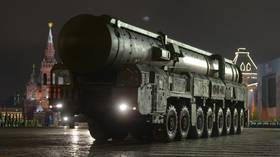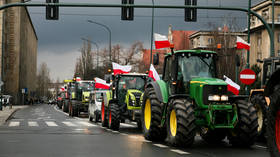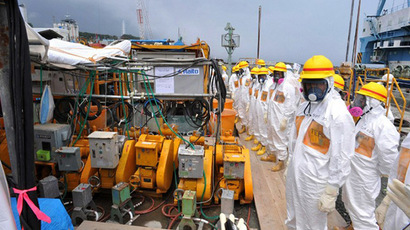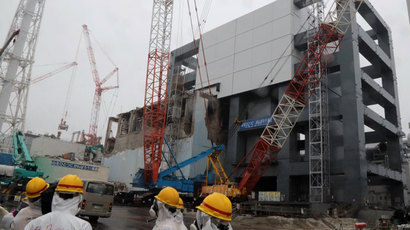TEPCO’s Fukushima inspections inadequate – Japan nuclear regulator
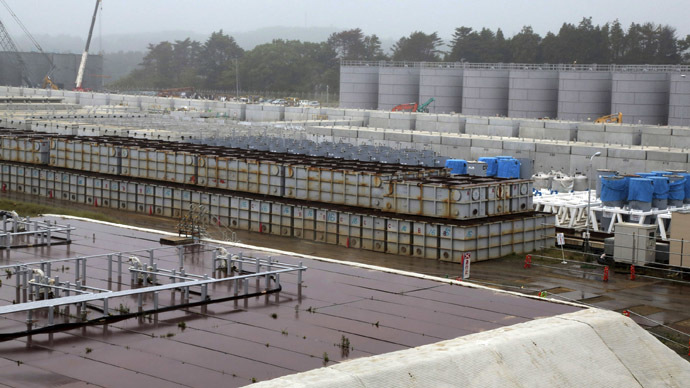
Japan’s nuclear regulator has concluded that the Fukushima nuclear plant’s operator was inadequate in its inspection of radioactive water tanks after news of yet another leak. TEPCO earlier admitted it will now require international help.
On Friday, the Nuclear Regulation Authority (NRA) Commissioner Toyoshi Fuketa visited the destroyed Fukushima Daiichi nuclear power plant to inspect the ongoing radioactive cleanup efforts. Fuketa’s comments follow those of the NRA chairman Shunichi Tanaka, who earlier this week worried that the makeshift giant radioactive containers were prone to failure.
"Fundamentally, for a facility holding that kind of
radioactive water, they did not take action that foresaw the
risks of possible leaks," Fuketa said at a press briefing in
Hirono. "On top of that – and this is an impression I had
before my visit – I can't help but say that the inspections were
careless."
The plant operator said on Thursday that a new radiation spill has been detected near
the storage tanks, which sparked fears of newer leaks before the
old ones had been dealt with.
Furthermore, the company has been accused of failing to properly
document inspections, leading to misspent resources and problems
cropping up that should have been noticed before, according to
Fuketa.
Japan has decided to raise the gravity of the latest Fukushima leak to
Level Three, which is considered a “serious radiation
incident” on the International Nuclear Event Scale (INES) for
radiological releases. The most dangerous, Level Seven, has only
been applied twice – for the Chernobyl catastrophe in 1986 and
for the meltdown of three reactors at the Fukushima plant.
TEPCO has also now admitted it will be seeking international expertise to help out
with the leaks.
"Many other countries outside of Japan have experienced
decommissioning reactors, so we hope we can consult them more and
utilize their experience,” TEPCO’s vice-president, Zengo
Aizawa, said at a news conference on Wednesday night.
"In that sense we need support - not only from the Japanese
government, but from the international community - to do this
job."
The UN’s International Atomic Energy Agency (IAEA) said that it
was ready to help out, if needed, and that it viewed the
situation “seriously,” just as China was saying it was
“shocked” to hear that radioactive water leaks are still
continuing. The neighbor has urged Japan to provide it with
information “in a timely, thorough and accurate way.”
Almost two-and-a-half years since a lethal combination of a tsunami and an earthquake crippled the power plant and caused a multitude of subsequent problems, TEPCO is faced with its most serious problem yet. This is after the recent discovery that radioactive water has been leaking from the plant’s storage tanks into the Pacific at an alarming rate of 300 tons a day.
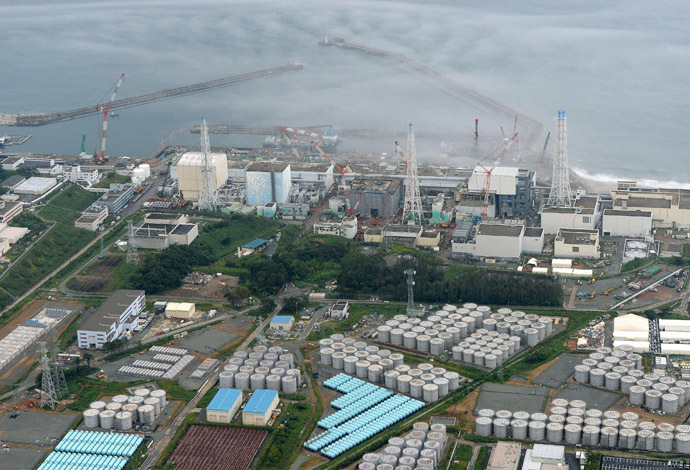
Numerous contingency measures have been thought of for the
problems that keep cropping up continuously in different parts of
Fukushima – including leaking radioactive water, as well as a
danger that Reactor 4 would collapse on itself. The structure
holds upwards of 1,300 nuclear fuel rods containing 14,000 times
the amount of radiation that the Hiroshima bomb released.
A never-before-attempted operation is in the
works. It will involve the manual removal of nuclear fuel rods
from Reactor 4 by way of a manually-operated crane – not by
computer. Any mistakes could lead to contamination on an
unprecedented scale. All this is happening at a time when the
soil beneath Reactor 4 is slowly sinking.
The tanks, which are used to keep the coolant that prevents the
damaged reactors from overheating dangerously, are considered to
be unsuitable because they were made for other industrial
purposes. They were adapted following the emergency, but they are
nearly full.
TEPCO estimates that it has already reached 85 percent capacity,
although plans to create a more permanent facility have so far
not materialized. The latest leak was the fifth time that toxic
water escaped from a basin.
The operator has been slow in measuring the levels of radioactive
elements that have flowed out of the station, as well as
publishing its data. TEPCO finally revealed this month that
highly unsafe tritium and cesium levels had been detected in the
seawater near the plant. A concentration of these elements could
damage the marine environment and build up in marine life,
possibly endangering humans further up the food chain.
The catastrophe of March 11, 2011, caused the meltdown of nuclear
fuel rods at three of the plant’s reactors, leading to a
contamination of air and sea, as well as crippling the region’s
agriculture and fishing activities, gravely damaging the economy
for years to come. On top of this, costs required for the
cleanup, as well as to sustain the nation’s needs and
compensation payouts, are projected to be in the billions – a
fact that has recently caused the Japanese government to step in
and start contributing money to TEPCO’s efforts.
The Fukushima nuclear meltdown has been called the worst
radioactive event since the Chernobyl nuclear disaster of 1986.
And with protracted cleanup efforts expected to last decades, by
multiple estimates, any misstep could lead to a cascading chain
of dangerous radioactive events, fallout researcher Christina
Consolo told RT. She made special reference to the
upcoming operation for the manual removal of fuel rods from
Reactor 4.




